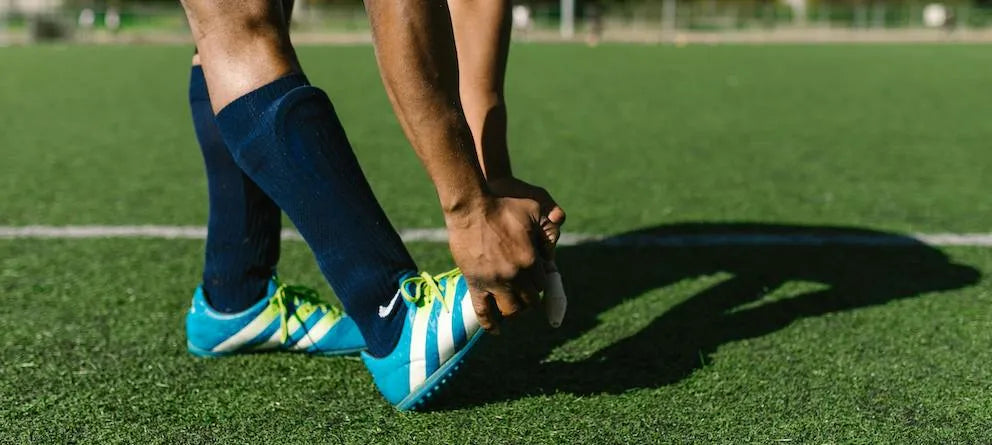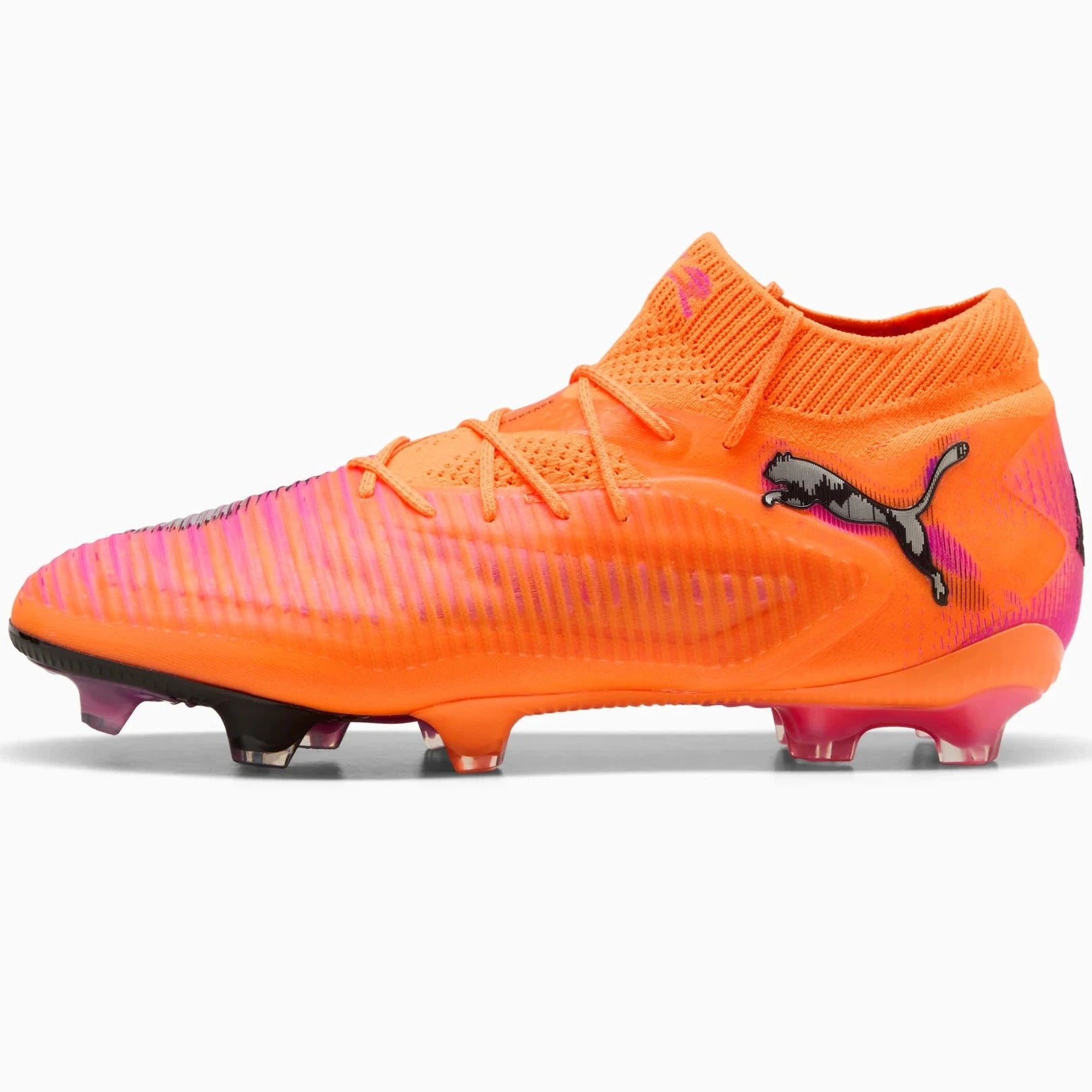How Should Soccer Shin Guards Fit?
Soccer shin guards are among the most essential pieces of soccer gear you will ever wear. They shield your shins, one of your body's most delicate areas, from tackles, collisions, and kicks. However, protection is only effective when it’s fitted properly. This guide will teach you the precise fit of soccer shin guards so you can play with comfort, safety, and confidence.
Why Soccer Shin Guard Fit Matters
There is more to wearing shin guards than just abiding by league regulations. They serve as your first line of defense against severe injuries and painful knocks.
With a good fit, you can concentrate entirely on your performance and avoid distractions on the field. In contrast, if the shin guards are too tight or too loose, it can cause you to slip, rub, or expose areas of your shin, leaving you vulnerable.
Here are some reasons why getting the right fit matters:
- Protection: Correct fit reduces the risk of shin injuries and bruises.
- Comfort: A good fit prevents rubbing, slipping, and distraction during play.
- Confidence: Players perform better knowing their legs are protected.
- Compliance: Most leagues require shin guards that fit properly for safety standards.
How to Measure for the Right Fit
The first step to getting the optimum fit is correct measurement. It's important to size shin guards to ensure your legs are comfortable and fully protected. When the guard fits properly, it won't dig into your skin during sprints or slide down in the middle of the game.
Here's a detailed guide on how should soccer shin guards fit and finding the right one for you:
- Measure your shin length. Measure the distance between just below your knee and just above your ankle with a tape measure.
- Go over the size chart. Compare your measurement to the brand's chart, which typically has the labels youth, small, medium, and large.
- Check for snugness. The guards should fit snugly without squeezing or pushing into your skin.
- Try shins with full gear. To make sure they stay in place when you run and kick, try wearing socks and cleats with your entire outfit.
Soccer Shin Guard Sizing Guide
|
Shin Length (inches/cm) |
Recommended Size |
Typical Age Group |
|
10" – 11" (25 – 28 cm) |
Youth Small |
Under 8 years |
|
11" – 12" (28 – 30 cm) |
Youth Medium |
8 – 10 years |
|
12" – 13" (30 – 33 cm) |
Youth Large |
10 – 12 years |
|
13" – 14" (33 – 36 cm) |
Adult Small |
12 – 15 years |
|
14" – 15" (36 – 38 cm) |
Adult Medium |
15+ years |
|
15" – 16.5" (38 – 42 cm) |
Adult Large |
Taller teens & adults |
|
16.5"+ (42+ cm) |
Adult X-Large |
Tall adults |
Signs Your Shin Guards Fit Correctly
Knowing how to recognize that your shin guards are the right fit can make a huge difference. If your shin guards fit correctly, your legs will be protected, but if they don't fit, they can cause irritation, gaps, or slipping.
Here’s how to know your shin guards fit properly:
- Coverage: They run from just below the knee to just above the ankle, covering the full shin.
- No slipping: They stay in place during running, tackling, and kicking.
- Comfortable fit: Snug but not overly tight, so there’s no rubbing or digging.
- Lightweight feel: They shouldn’t feel bulky or distracting.
- Secure with gear: They pair well with socks and cleats without shifting.
Common Mistakes Players Make
Even seasoned players can get shin guard fit wrong, which impacts comfort and safety and can often lead to major problems during games. If you’re looking into how should soccer shin guards fit, make sure avoid the following:
- Wearing too big or too small shin guards. Guards that are too short for your shins either feel heavy and awkward or leave areas exposed.
- Placing them too high or too low. When positioned incorrectly, shin guards expose your bone and lessen protection where it's most needed.
- Disregarding the need for ankle support. Ankle guards are necessary for certain athletes, and not wearing them raises the risk of sprains or knocks.
- Wearing outdated and worn-out guards. Over time, the shin guards’ padding degrades and becomes less effective at absorbing impact and staying in place.
Types of Soccer Shin Guards
Not all shin guards are created equal—different styles suit different players and needs. Here are the main types:
Slip-in Shin Guards
Lightweight and minimal, slip-in soccer shin guards slide under your socks. They require a snug fit and are best worn with tight socks or compression sleeves to prevent slipping. Perfect for experienced players who want flexibility and speed.
Ankle Shin Guards
Ankle shin guards come with extra ankle padding for more support and coverage. They’re especially popular with younger players or those who prefer added stability around the ankle area.
Sleeve Shin Guards
Built into a fabric sleeve, sleeve shin guards hug the leg for a secure, no-shift fit. They’re ideal for competitive players who want consistent protection without having to adjust mid-game.
How Should Soccer Shin Guards Fit FAQ’s
1. How high should shin guards be for soccer?
Shin guards should cover from just above the ankle bone to about two inches below the knee. This ensures full protection while allowing for proper movement.
2. Should shin guards be bigger or smaller?
Neither. Shin guards should match your shin length. Too big and they’ll feel bulky; too small and they won’t protect you fully. Always size according to measurement, not guesswork.
3. Where are shin guards supposed to sit?
Shin guards should sit directly on the front of your shin bone, centered between your ankle and knee. They should never shift to the side or drop too low while playing.







